1000 and 1 one idea for organizing an extension to a house
Sooner or later, many owners of country houses or urban private households face the question of organizing an extension to the house. Someone needs a bright veranda as a closed porch, someone needs additional space to accommodate a residential or utilitarian space. Some homeowners are setting up an extension near the main entrance, while others are expanding into the backyard area. Each of the ways of arranging an extension to a house has its own characteristics and nuances. We hope that the selection of original, but at the same time practical extensions, collected by us for this publication, will help you decide on the style of execution, the choice of building and finishing materials, and will prompt the organization of the interior of the veranda or an additional room.
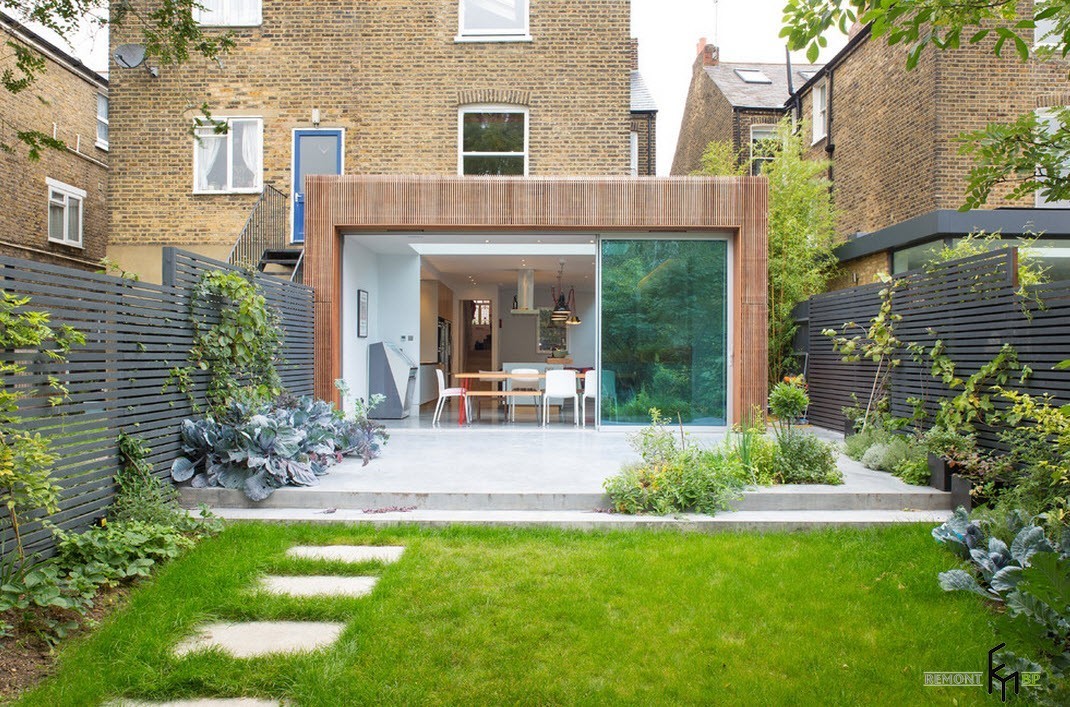
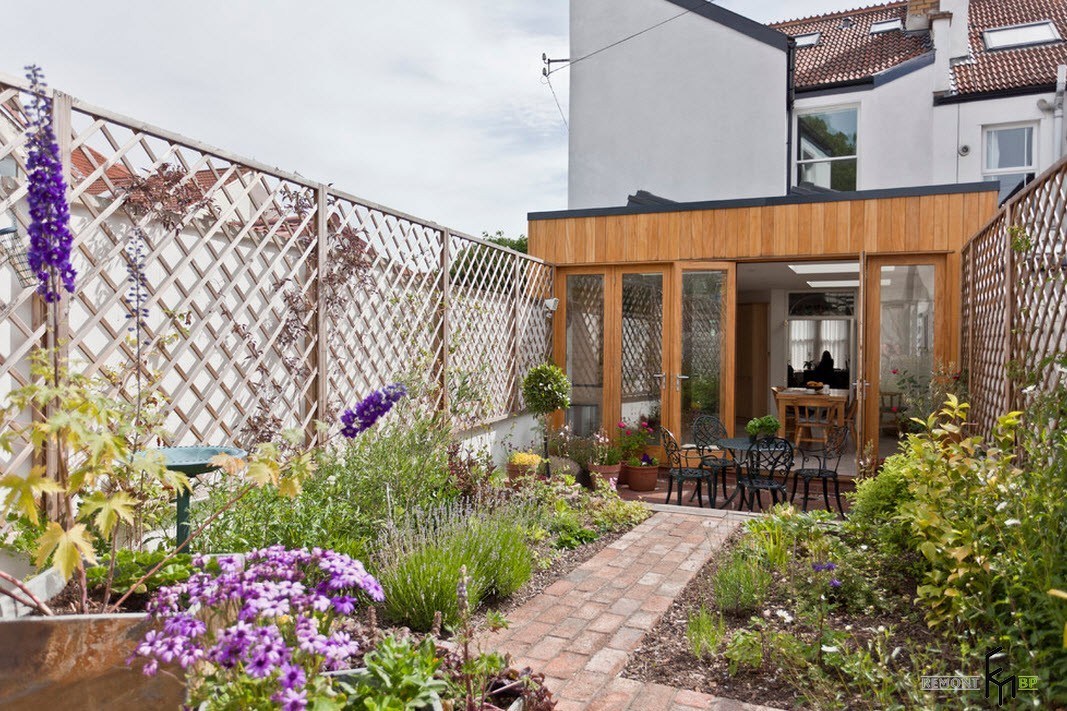
Within small plots of urban private households, every square meter counts. Unsurprisingly, many homeowners need extra space to organize their kitchen, dining room, or living room.
Exterior of the extension
Most of the outbuildings of urban private houses are located in the backyard, but there are options for organizing additional premises that are visible from the street, either located near the main entrance or placed in such a way that the extension itself becomes the main entrance to the dwelling. In this case, it is especially important what the exterior of your structure will be. Of course, ideally, the extension looks like it was originally conceived and is an integral part of the building. But it often happens that the main building is old enough or made of materials that the homeowner does not want to use and the addition of an additional room cannot be done harmoniously and in accordance with the features of the facade of the home ownership. In this case, you can apply a radically opposite method and organize an extension, which will become the focus of attention of the exterior of the entire building, will stand out for the originality of the design or decoration, and may even differ in style and method of execution.
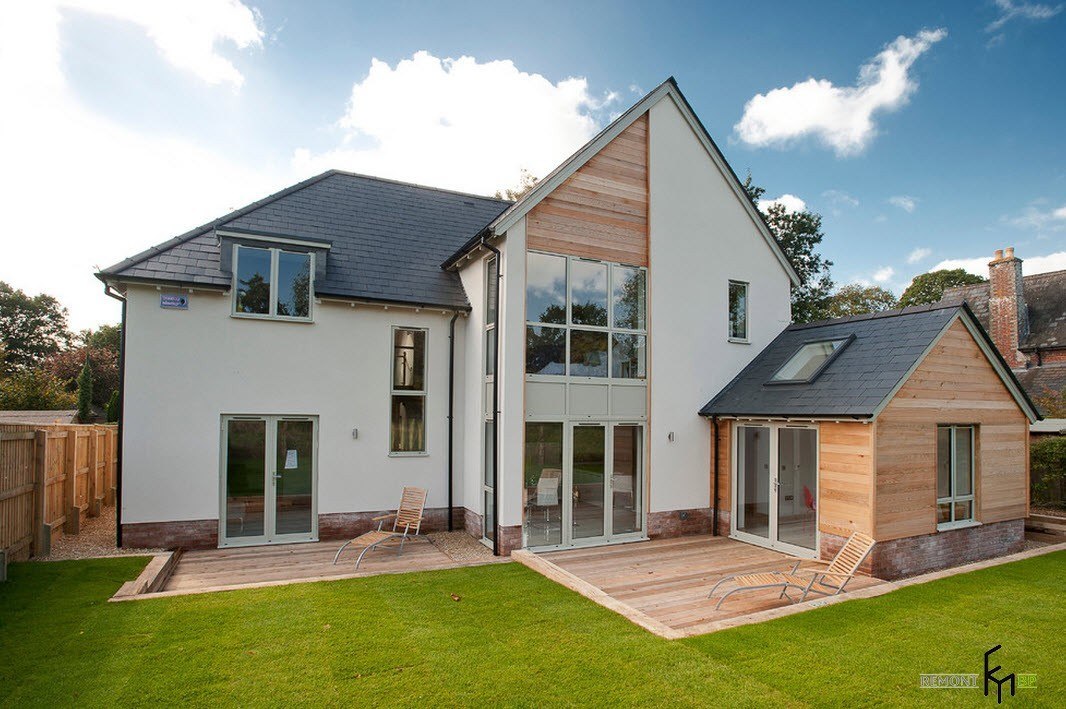
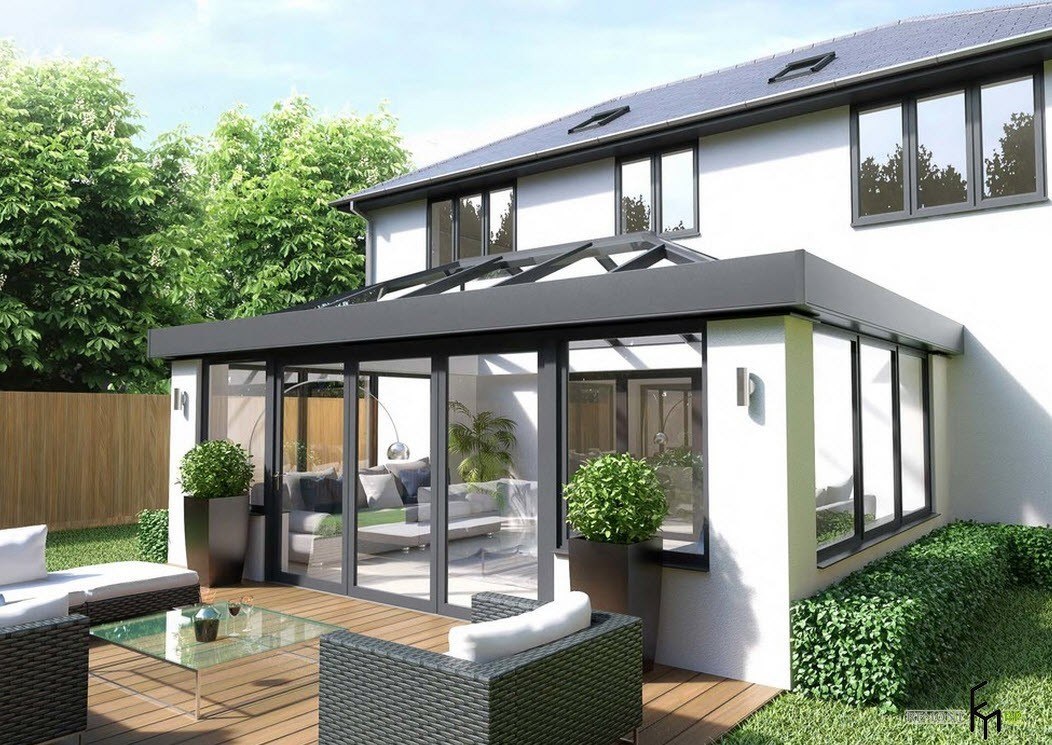
Here is one example of the successful integration of a new space in close proximity to the main building. The use of the same building and finishing materials for the construction and facing of the extension, which was used in the construction of the main building, made it possible to create a harmonious ensemble. The building looks as if the extension has always been part of the household.
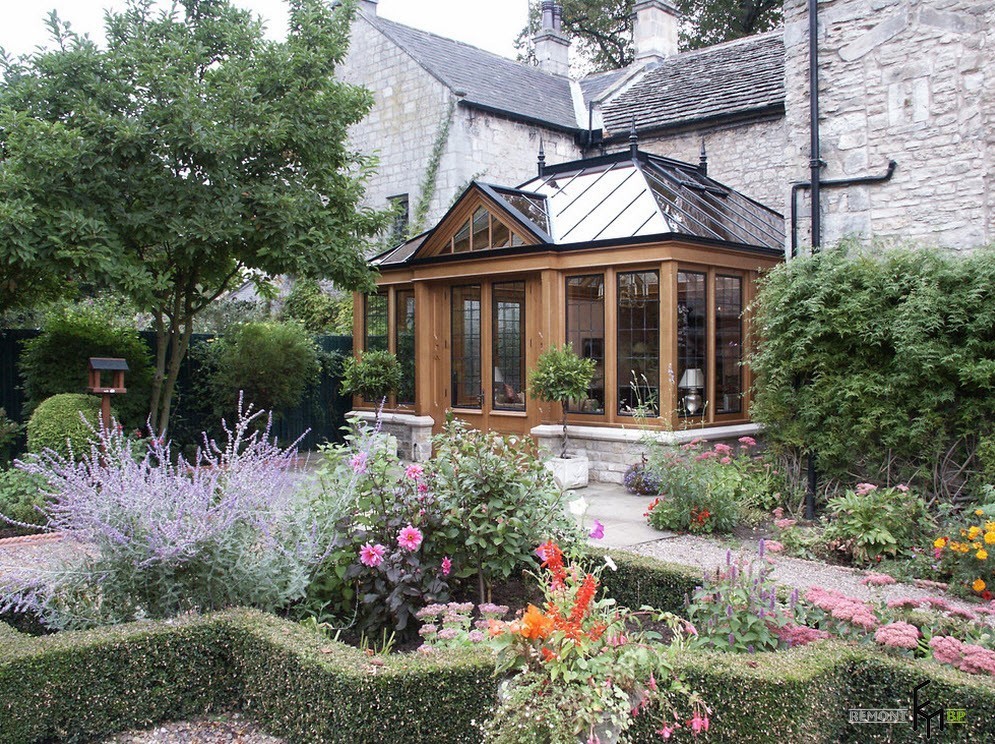
And this is already an option for the construction of an extension that is different in appearance from the main structure. The additional space looks more like a glazed veranda, it is literally flooded with natural light. It is a great pleasure to have such an original structure in the backyard, opening into a neatly planned and organized park and garden ensemble.
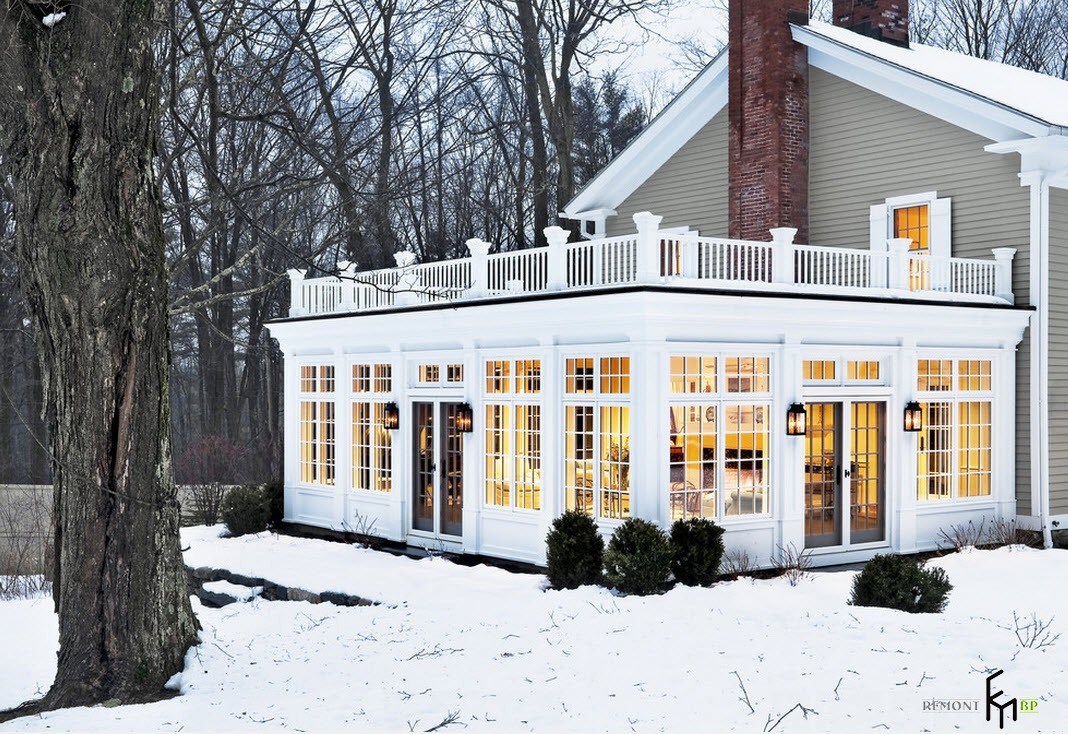
Here is an example of how an extension, which was not conceived during the construction of the main building, becomes not only its integral part, but also a visiting card. A spacious, snow-white extension, decorated in French style, has become not only a living room for the first floor, but also an open area with a fence for the upper level.
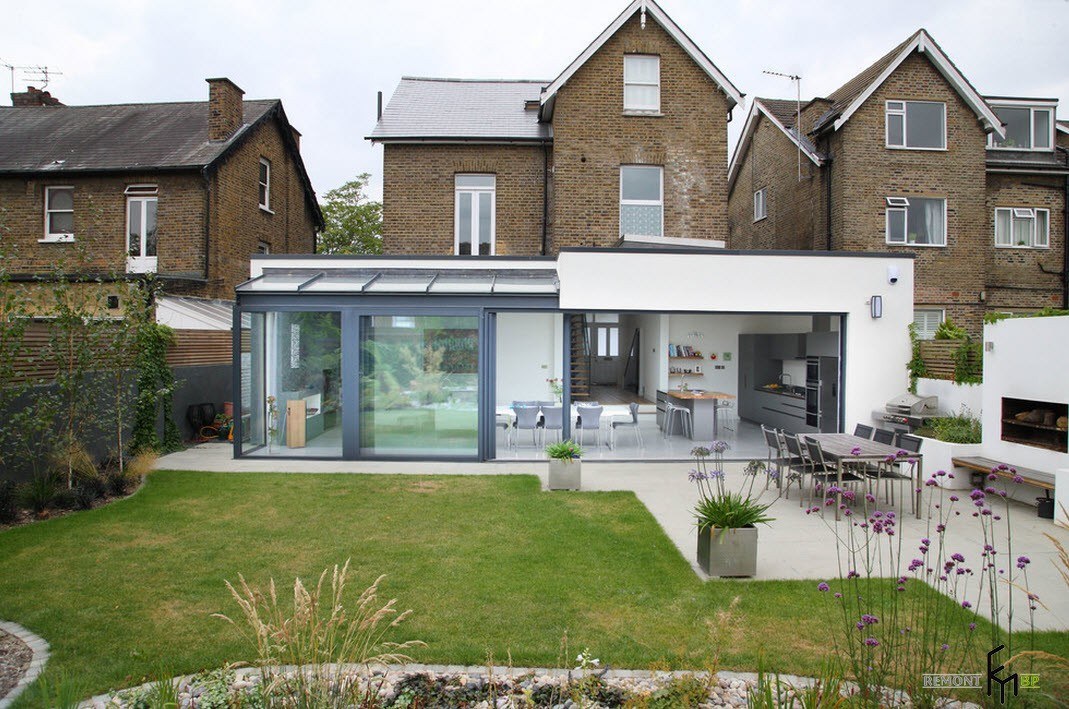
Another option for a large extension, the exterior of which is radically different from the design and decoration of the main building. The incredibly spacious premise of the new construction continues in the backyard - the cemented area has a modern patio with a dining area, barbecue equipment and an oven.
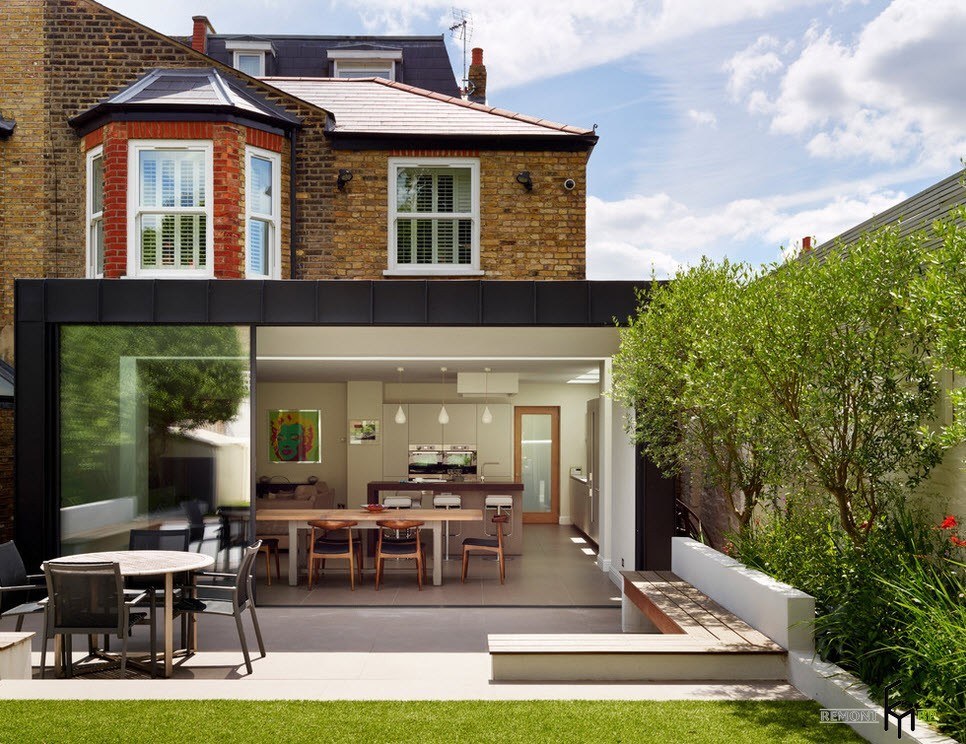
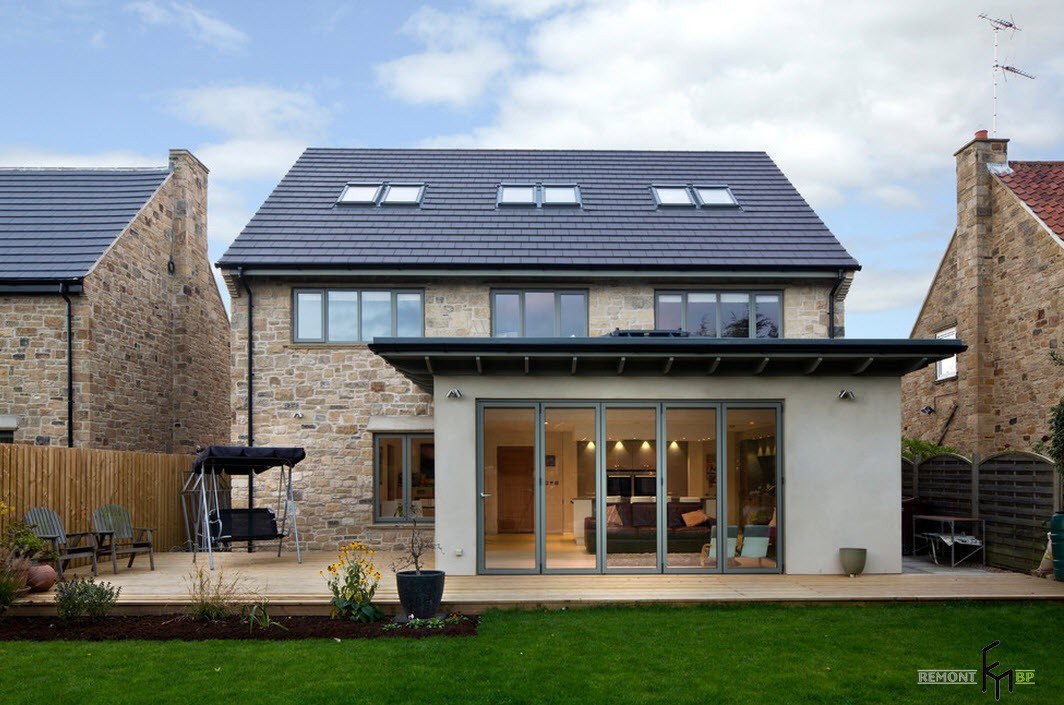
An extension located on a wooden platform or deck provides additional space not only inside the premises, but also outside it. On the platform, you can organize places for relaxation, barbecue or active games for children and adults.
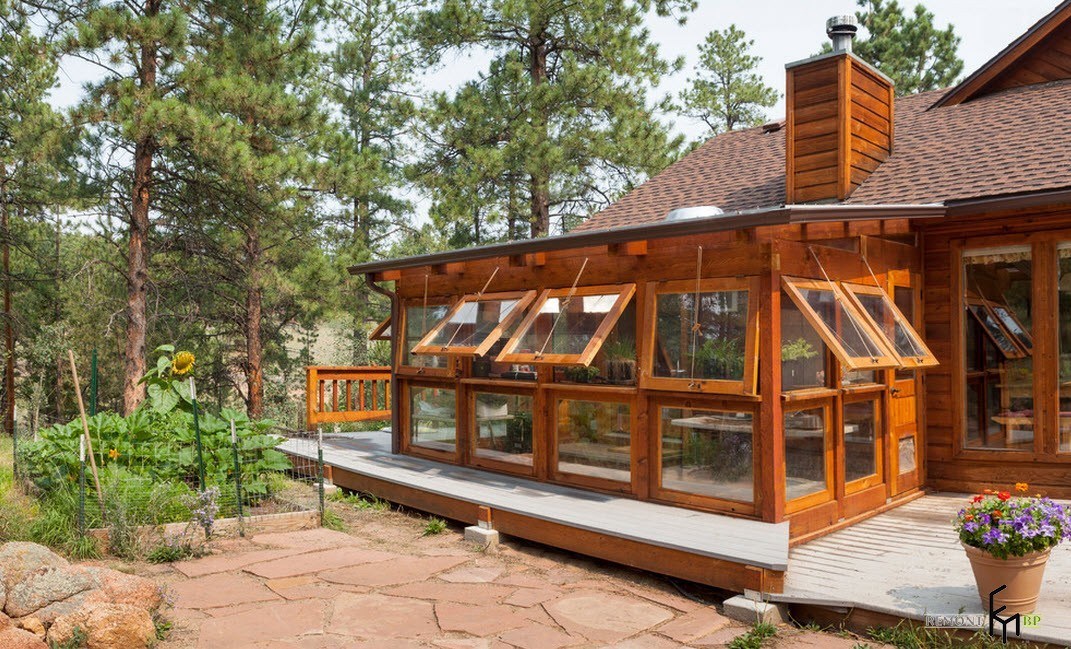
Considering that a lot of wood was used in the construction of the main building, a logical decision for the construction of an additional room was the choice of a similar material, combined with glass inserts.
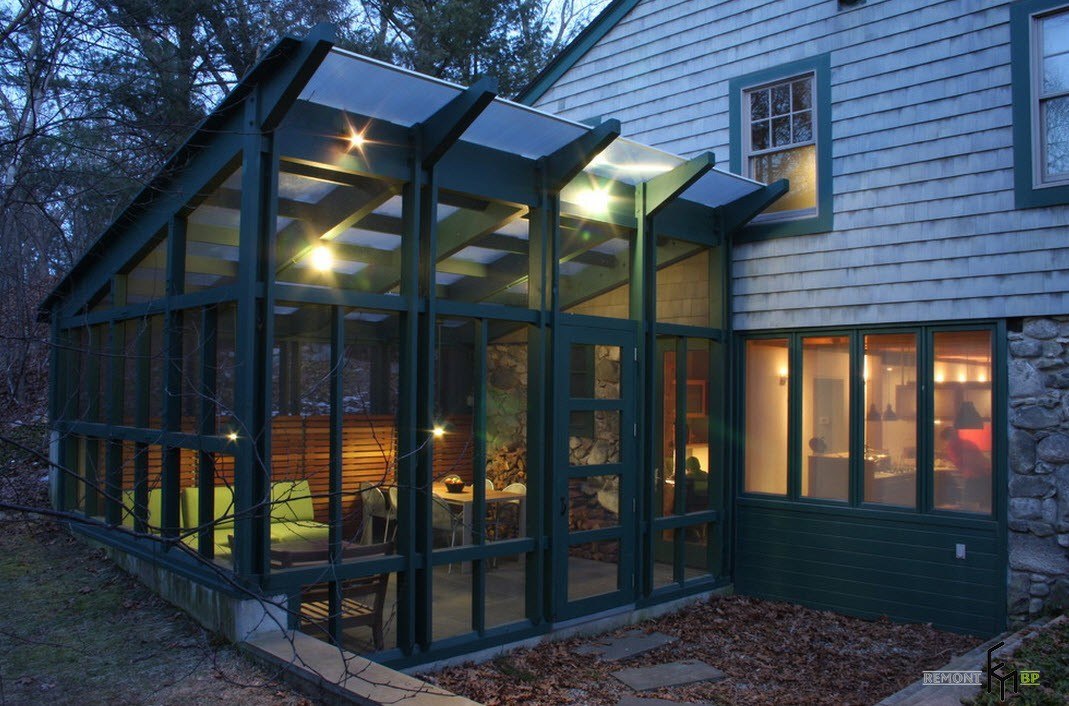
Another example of an extension made entirely of glass inserts supported by wooden structures, but this time painted to match the elements of the main building.
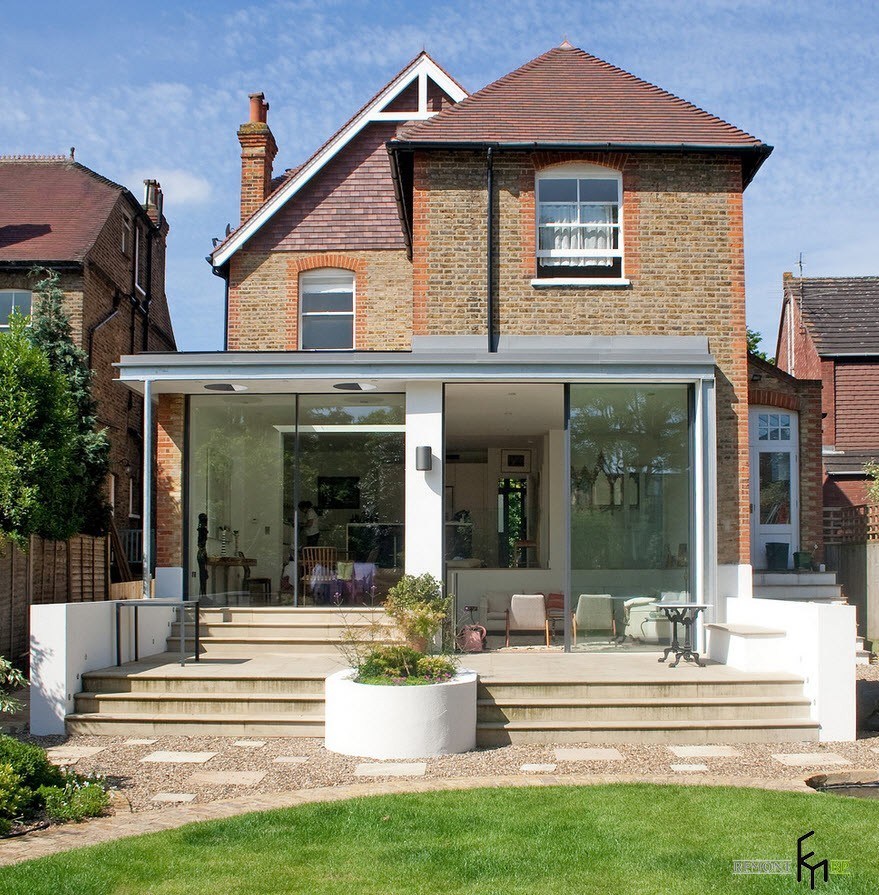
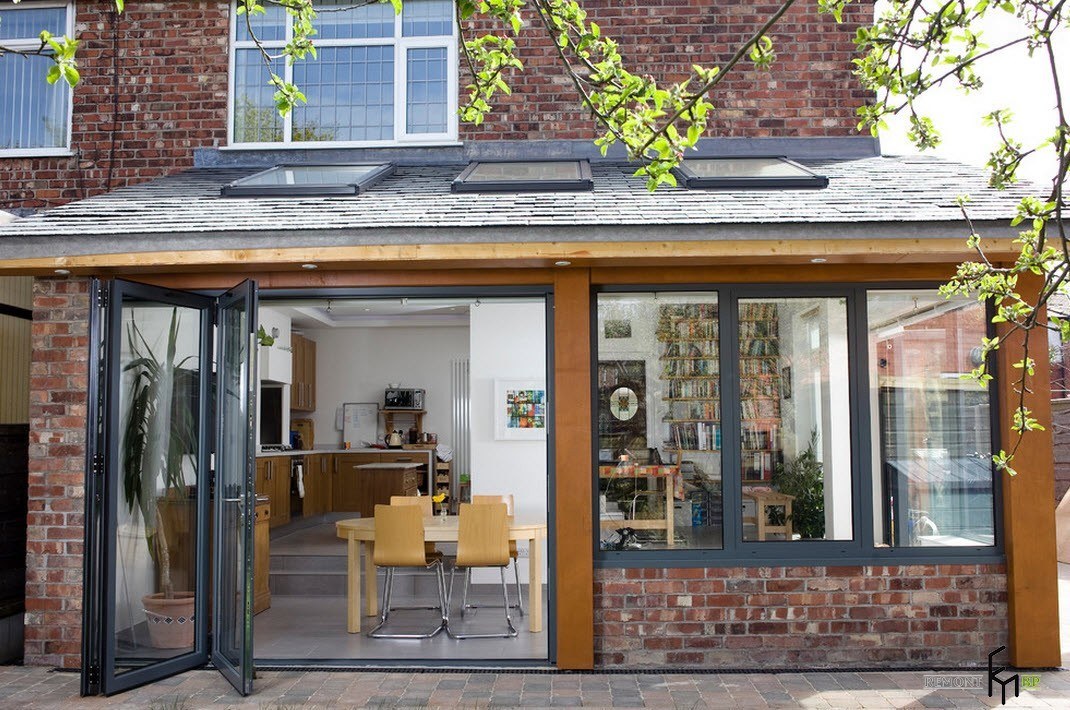
If one of the walls of the extension is adjacent to a fence or part of another building, it is performed in a blank version, the rest of the surfaces can be glass from the ground to the roof or have a small foundation made of brick or stone.
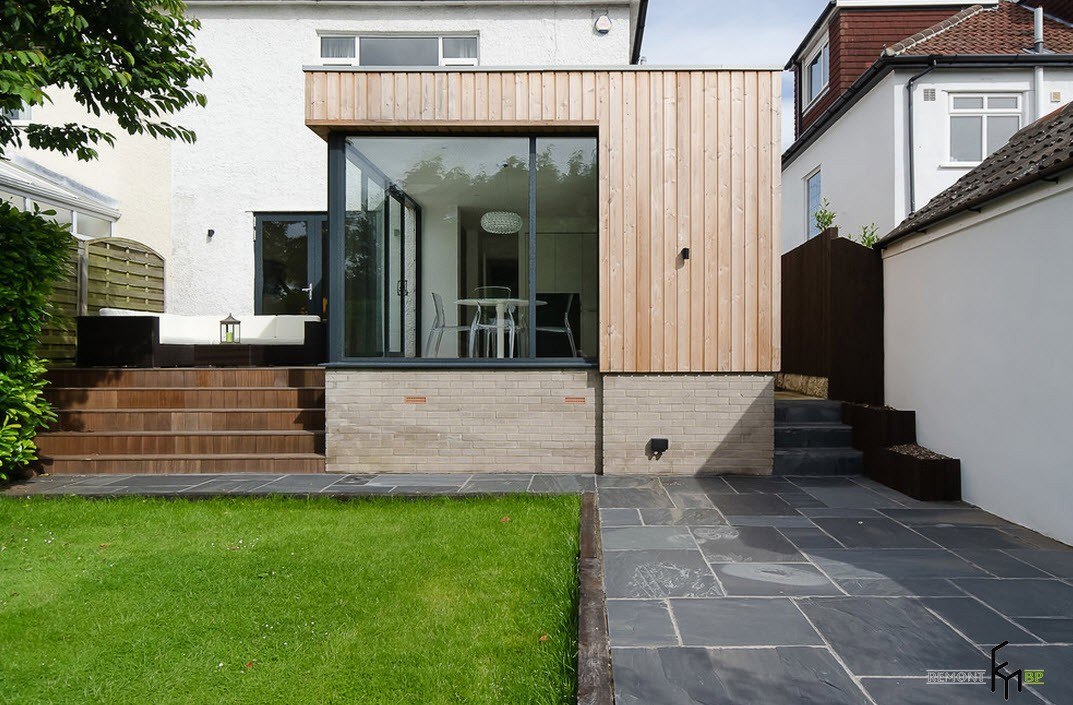
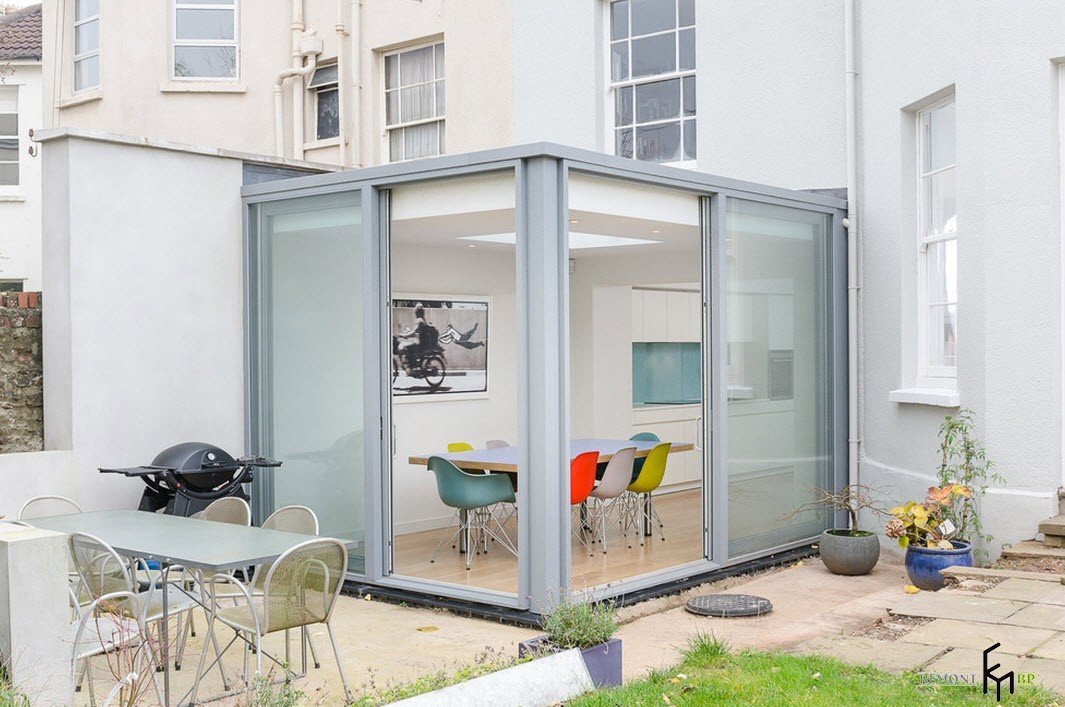
Sheer or frosted glass walls and sliding doors can be great options for adding an extra room or veranda.
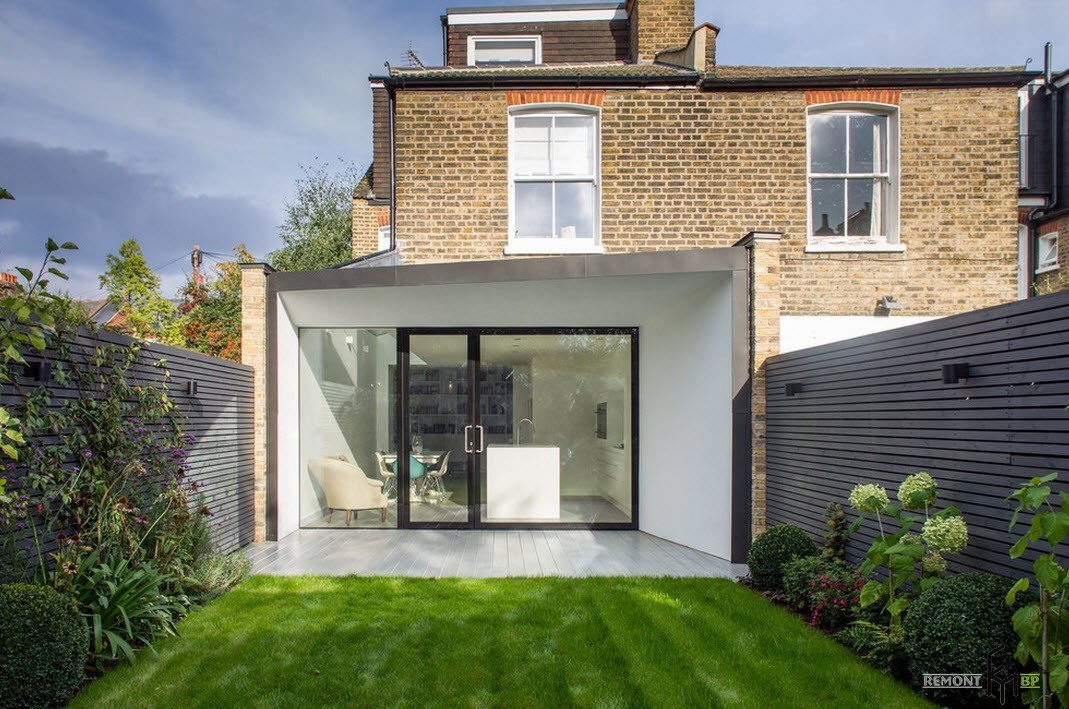
If the newly built walls of the new premises are deaf and there is no way to arrange glass openings on the roof, then at least one of the walls should be glass in order to provide not only natural illumination of the room, but also to defuse the psychological atmosphere of the enclosed space.
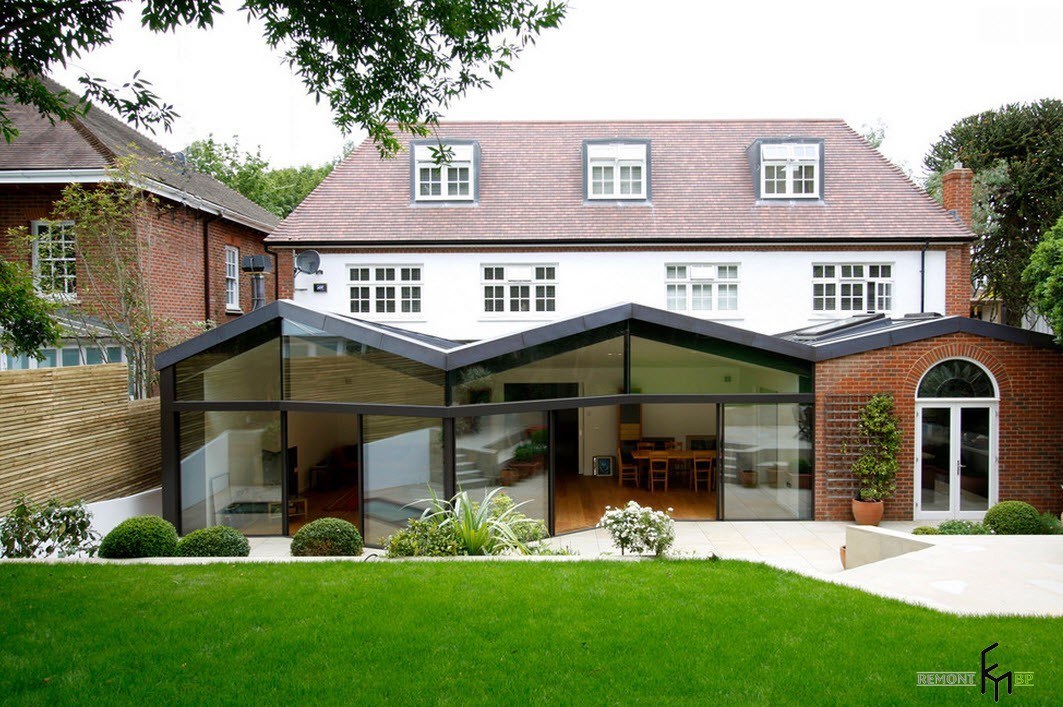
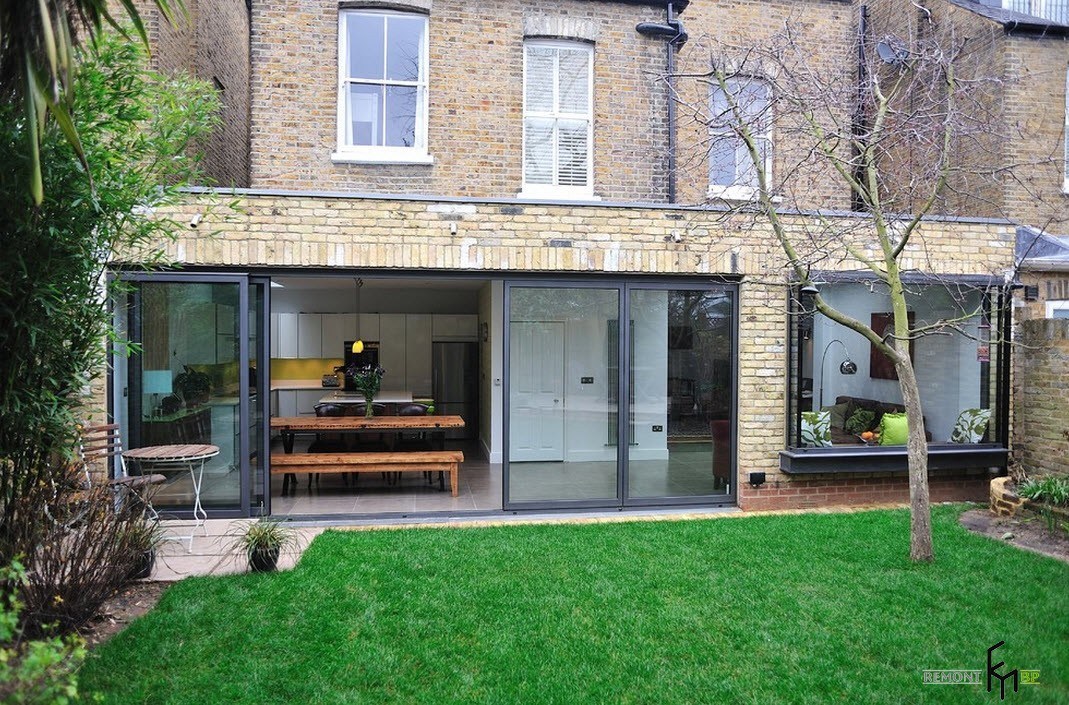
This spacious room is a whole complex of outbuildings, within which it was possible to equip not only a large kitchen with a dining room, but also a spacious living room for the whole family to relax and receive guests.
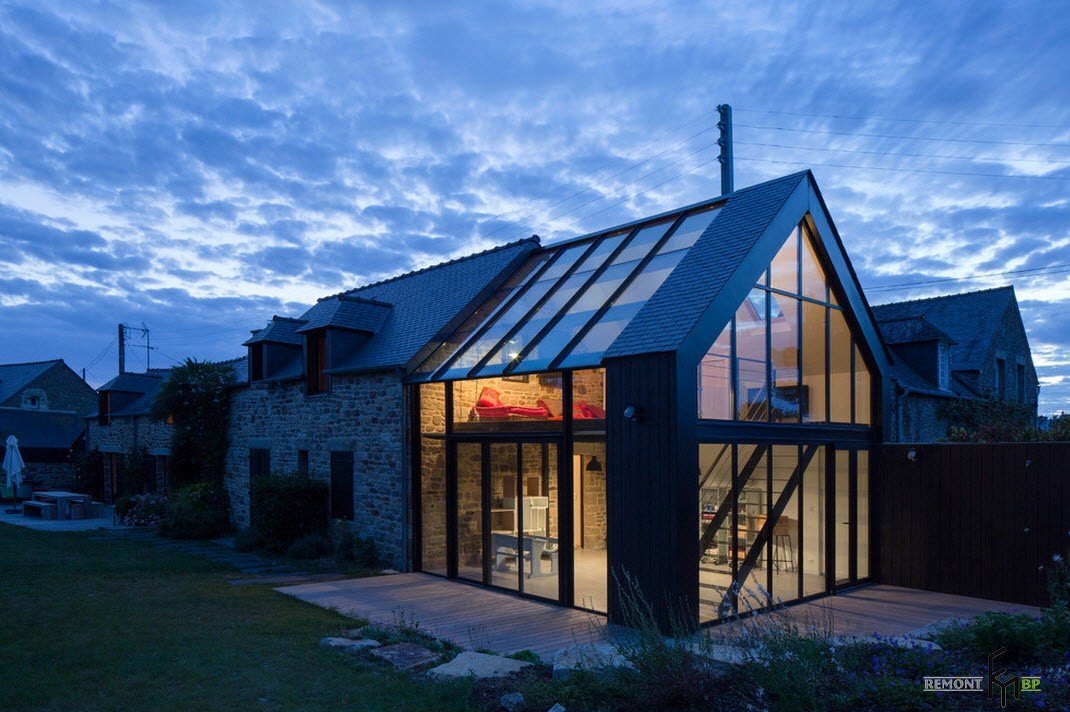
This annex looks more like a full-fledged two-story building with glass walls and a roof. The glass part of the new building faces the backyard, while the facade is made in a more deaf version.
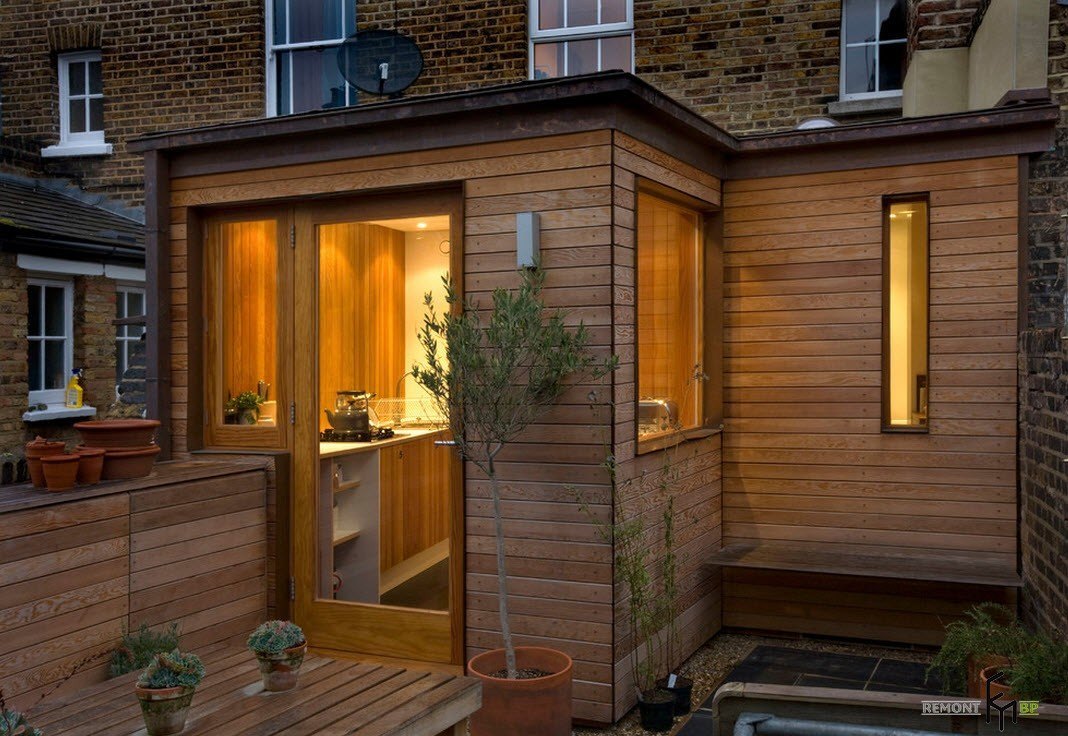
And this is perhaps the smallest room that has been added in the backyard. Lined with wood paneling both inside and out, the extension has become a small kitchen area.
Interior of additional space
Of course, the interior of the outbuildings will depend on what kind of plan the room is located in it. In addition to the functional component, there is also a nuance of combinatorialism with the rest of the house. Most homeowners prefer the interior of the extension to be in the same colors and textures as the main area. But there are also those who dare to experiment, unexpected design solutions or the embodiment of their ideas, for which there was no place in the original home ownership.
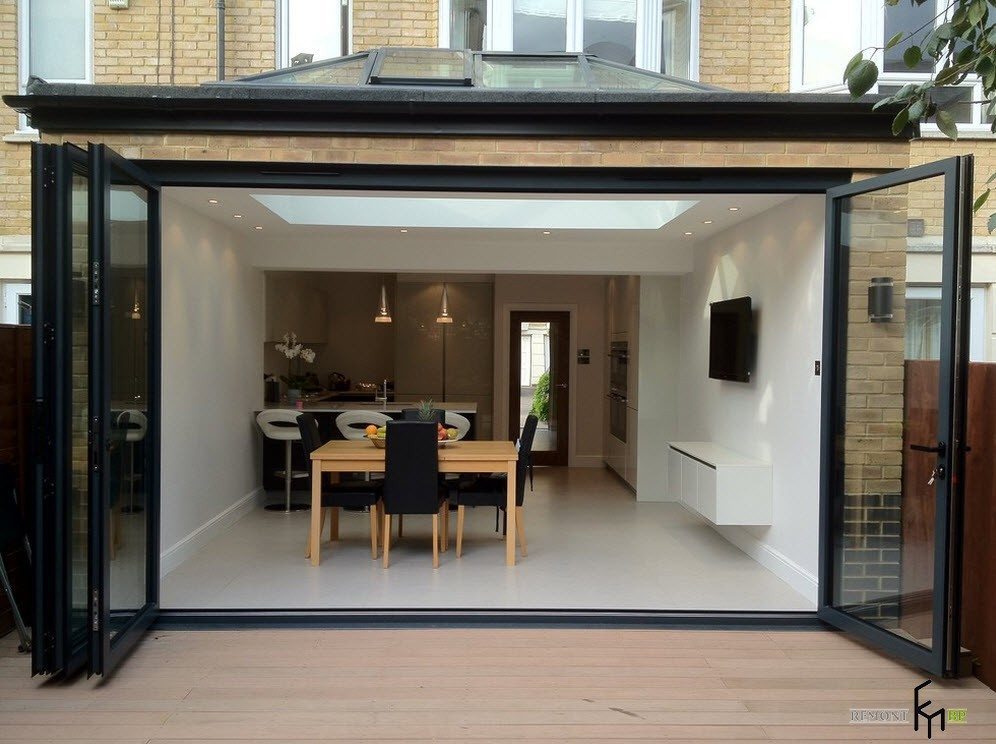
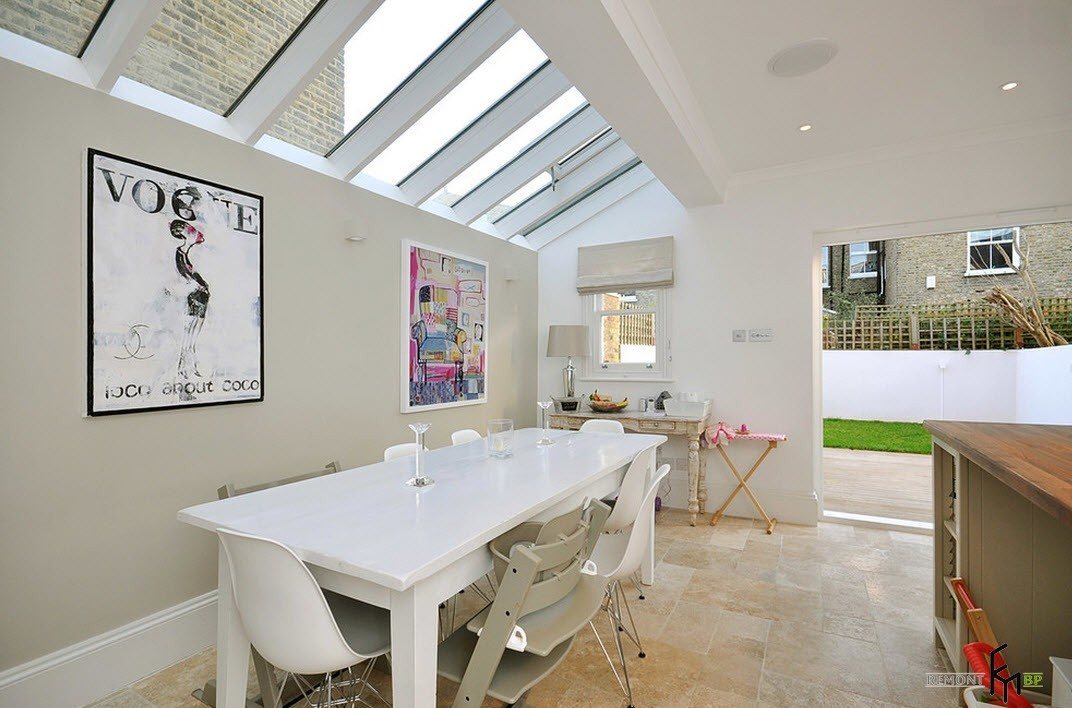
This annex has a kitchen and dining area. Light, almost snow-white surface finish allows you to visually expand the new space. It is not always possible to provide the extension room with a sufficient amount of natural light due to window openings; in this case, the glass ceiling, or parts of it, saves.
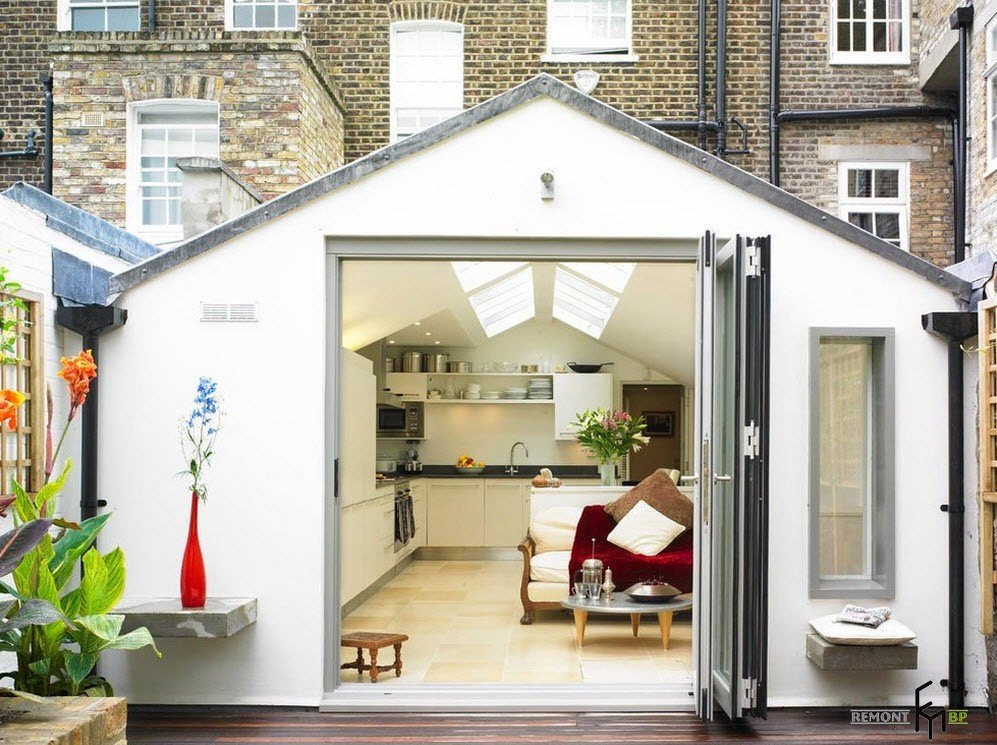
Another option for an extension with an interior in light colors, where it was possible to place not only a kitchen, but also a small living room.
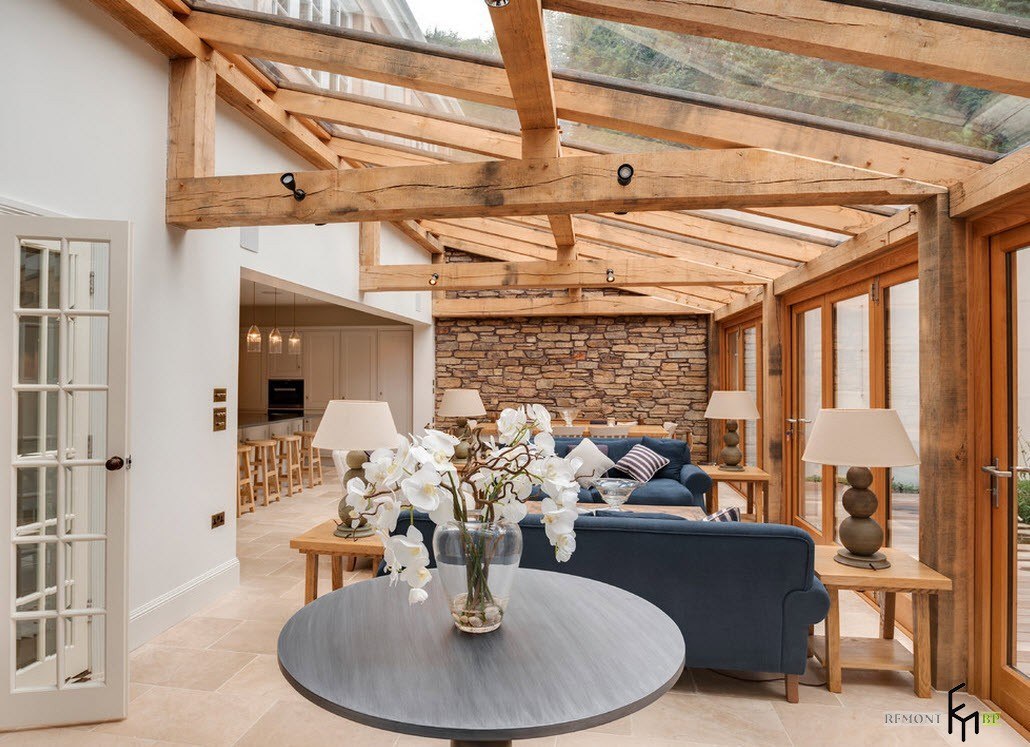
This modern living room with country influences is organized in a glazed veranda attached to the main building. In suburban life, it is extremely difficult to do without the use of wood and stone cladding, because these are the most suitable building and finishing materials for home ownership in nature.
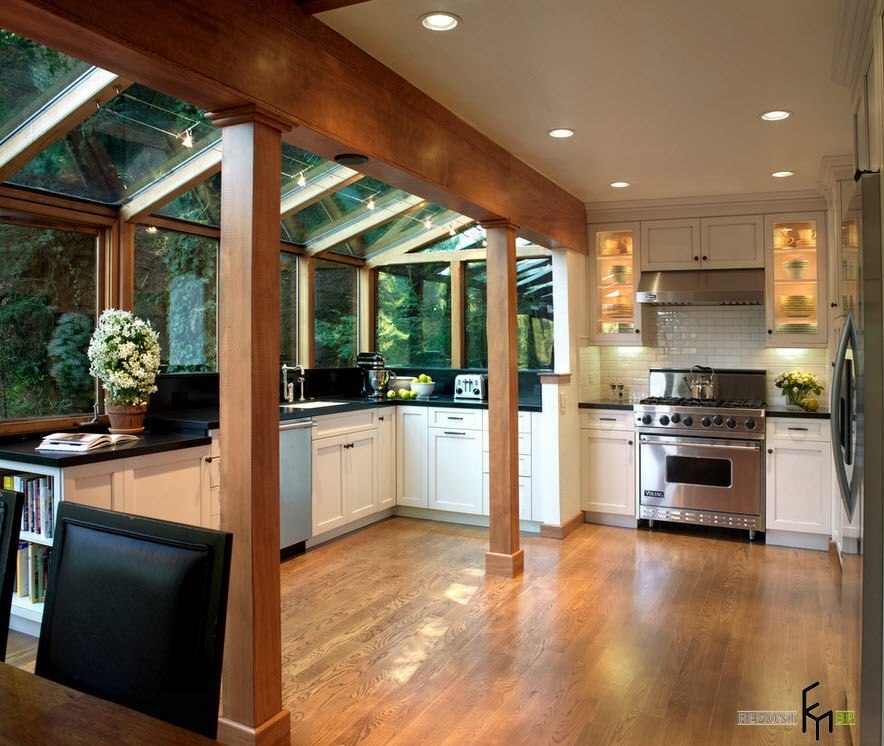
Another glazed veranda with wood beams has become a haven for the classic kitchen and dining area. White, black and woody tones used in the interior created a really cozy home atmosphere of the additional room.
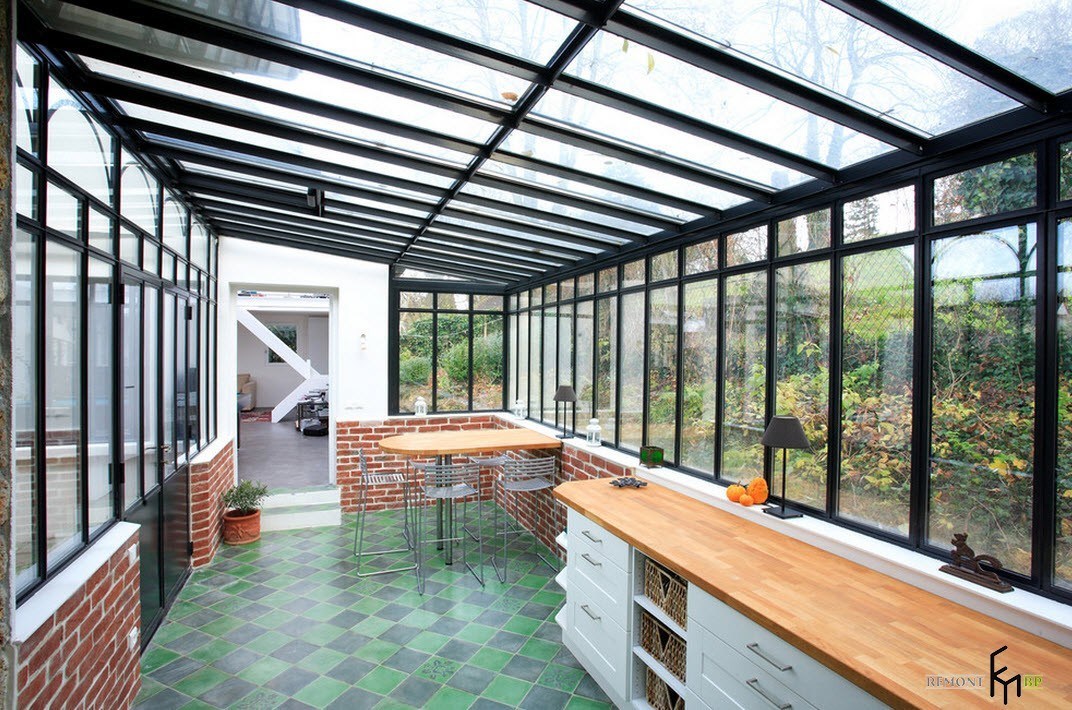
Another example of a veranda with a glass ceiling and most of the walls. Metal structures have already been used here, wood is present only as a material for the countertops of the kitchen and dining areas.
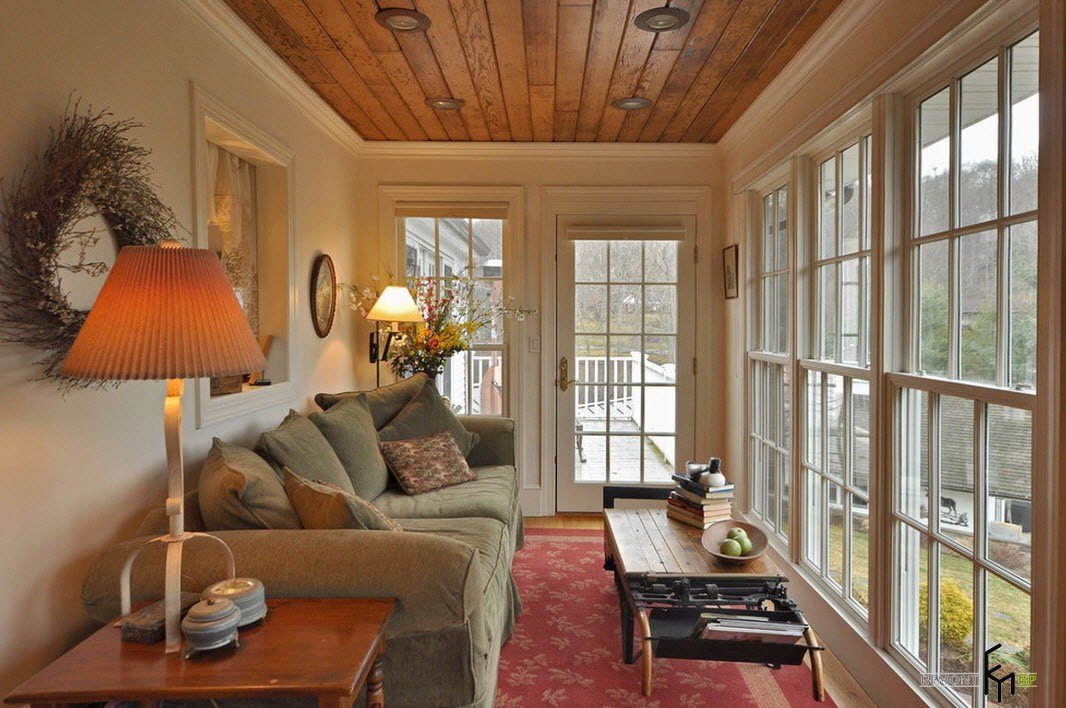
In this cozy small veranda, we managed to equip a mini-living room with a reading area. The elements of the rural interior in this case came in handy.
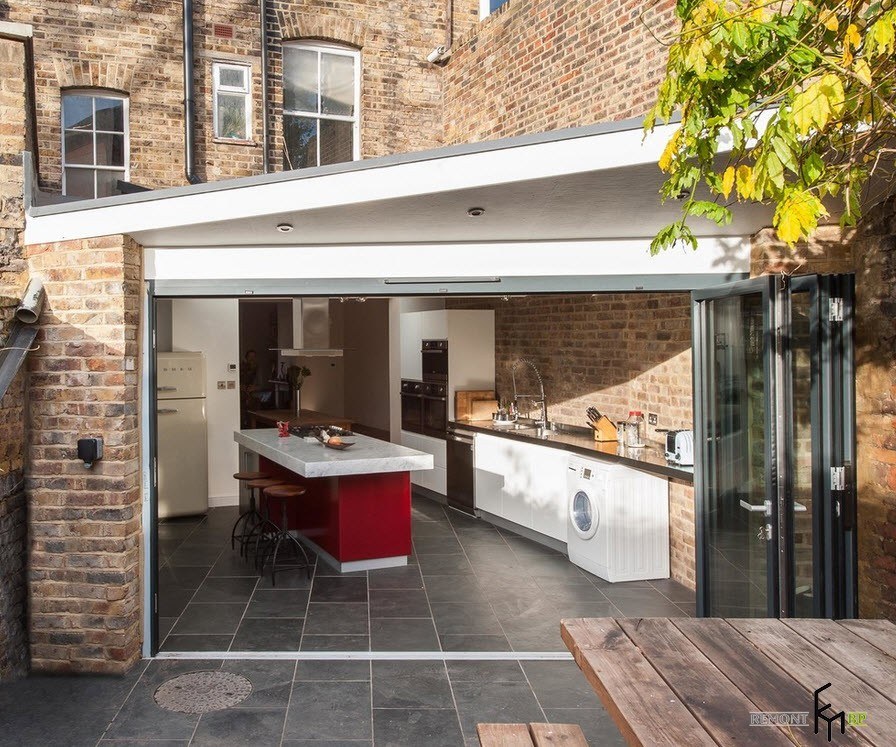
This versatile extension is an example of how an additional room can be organized even in an asymmetrical nook of space sandwiched between two walls. In the interior of the resulting kitchen, it was decided not to paint over the original brick wall, but to leave it as part of the design after processing it with special compounds.
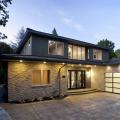 Country house facade design: a variety of stylistic directions
Country house facade design: a variety of stylistic directions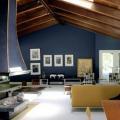 Wooden ceilings - 25 interior examples
Wooden ceilings - 25 interior examples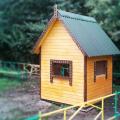 How to make a children's playhouse with your own hands
How to make a children's playhouse with your own hands